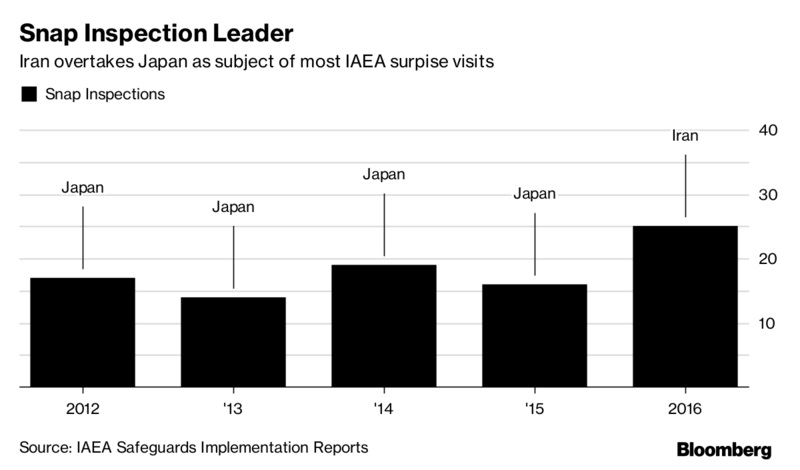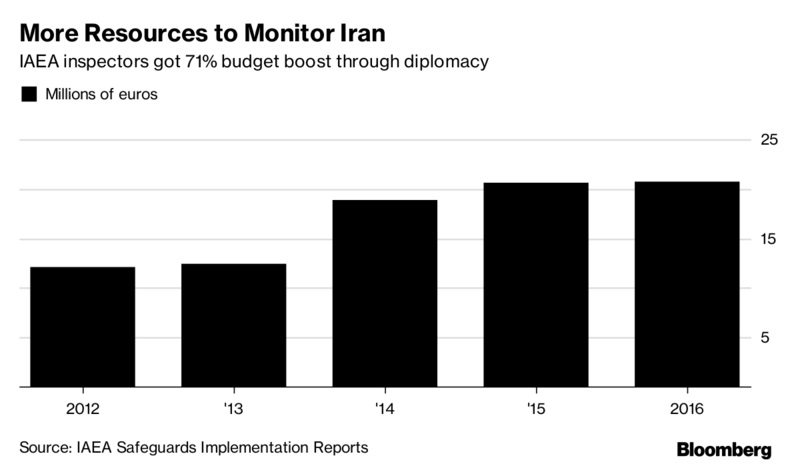(bloomberg) -- International Atomic Energy Agency monitors conducted 402 site visits and 25 snap inspections in the first 12 months since the deal was enacted in early 2016, according to data from reports to IAEA members. The figures may help dispel doubts over the adequacy of the Joint Comprehensive Plan of Action agreement involving the U.S., China, France, Germany, Russia and the U.K.
The future of the deal has been under threat since U.S. President Donald Trump took office. He pledged to tear up the agreement in his election campaign, and his United Nations envoy Nikki Haley last week questioned what the U.S. gets out of it. The IAEA reported Aug. 31 that Iran stuck to its commitments under the pact, which capped nuclear work in exchange for sanctions relief, and Trump has until Oct. 15 to decide whether to certify Iran’s compliance.
“The JCPOA represents a clear gain for nuclear verification,” IAEA Director General Yukiya Amano told officials on Sept. 5 in Slovenia, just hours before Haley spoke at the American Enterprise Institute in Washington. “Iran is subject to the world’s most robust nuclear verification regime.”
Iran’s nuclear program is back on the agenda for the IAEA’s quarterly board meeting this week in Vienna.
“Actions speak louder than words in the JCPOA, and Iran is speaking clearly,” said Robert Kelley, an American nuclear weapons engineer who directed IAEA inspections in Iraq, Libya and South Africa. “We know from the CIA that Iran did have a nuclear weapons program before 2004, and we know from the JCPOA that they stopped it. They have submitted to intrusive inspections to prove they have stopped.”

One of the agency’s most powerful tools is “Complementary Access,” or so-called snap inspections, which provide short-notice access to nuclear sites and other facilities and weren’t an option for the IAEA before the nuclear deal. The 25 conducted in Iran last year was the most for any country in at least five years, agency data show.
If the U.S. finds Iran in non-compliance, that could trigger the re-imposition of sanctions and signal trouble for the transparency demanded by the accord. Iran’s President Hassan Rouhani has warned that while his country won’t be the first to violate the terms of the accord, it also won’t stand by and allow the U.S. to disregard its own obligations.
Sticking to the agreement may be the best way for Haley and the Trump administration to reduce concern over the potential for undeclared nuclear activities, according to Andreas Persbo, the executive director of Vertic, a London-based nuclear-policy researcher that advises European governments.

Under inspections criteria spelled out by the accord, more than 400 IAEA monitors are assigned to Iran and on the lookout for possible violations.
“The JCPOA has increased the inspection effort in Iran, placed all its declared facilities under international safeguards, and halted the growth of Iran’s nuclear capabilities,” Persbo said. “This increased level of transparency is to the benefit of all, including the United States."